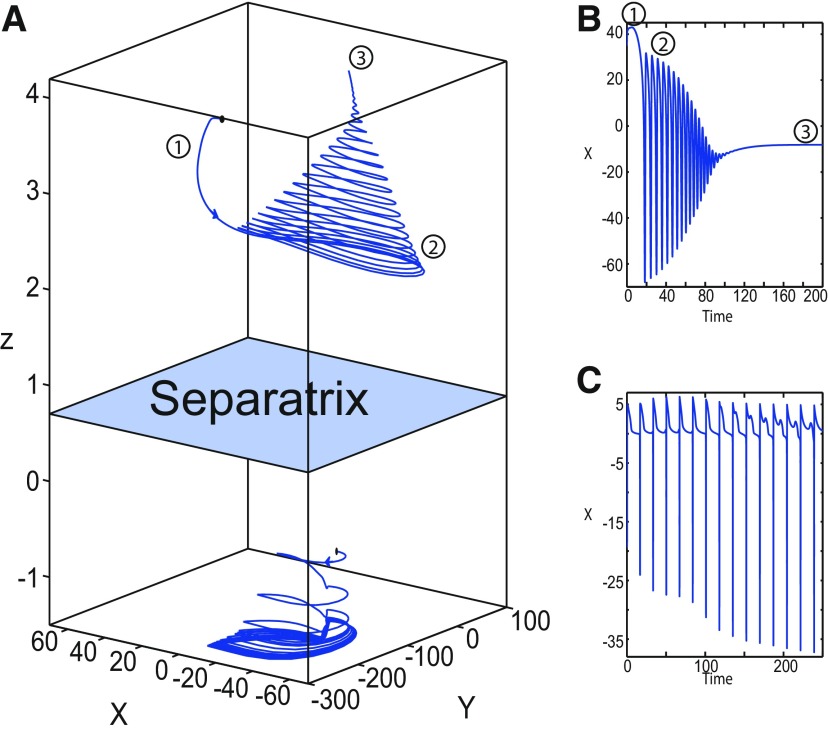Figure 29.
A, Coexistence of nonoscillatory state and RSE. Here a transient seizure-like fast discharges disappear through a Hopf bifurcation, and then the nonoscillatory state occurs. The simulations are performed without noise. The equilibrium point of the nonoscillatory state and a stable LC coexist for m = −0.5 and x0 = −0.8 (). Trajectory segments are numbered in A and B. The transient seizure-like fast discharges correspond to the segment 2, the transient NS to the segment 1, and the nonoscillatory state to the segment 4. The equilibrium point of the nonoscillatory state exists. After the transients NS and then seizure-like fast discharges, the Epileptor remains in the nonoscillatory state. The arrows indicate the direction of trajectories. For easier visualization, we plot generalized coordinates (X, Y) corresponding to () for the nonoscillatory state (top) and to () for LC (bottom). LC is characteristic of RSE. B, C, Time series of the nonoscillatory state (B) and LC (C). Parameter settings correspond to region V in Figure 34 and to region 6 in Figure 32. A, Top, I.C = [−1 −5.5 3.8 0 0 0.01], Ts = [0 200], and r = 0.02. A, Bottom, I.C = [10 −5 −1 0 0 0.01], Ts = [0 250], and r = 0.004. The coexistence of LC and S can be found in area II (Fig. 12B).

